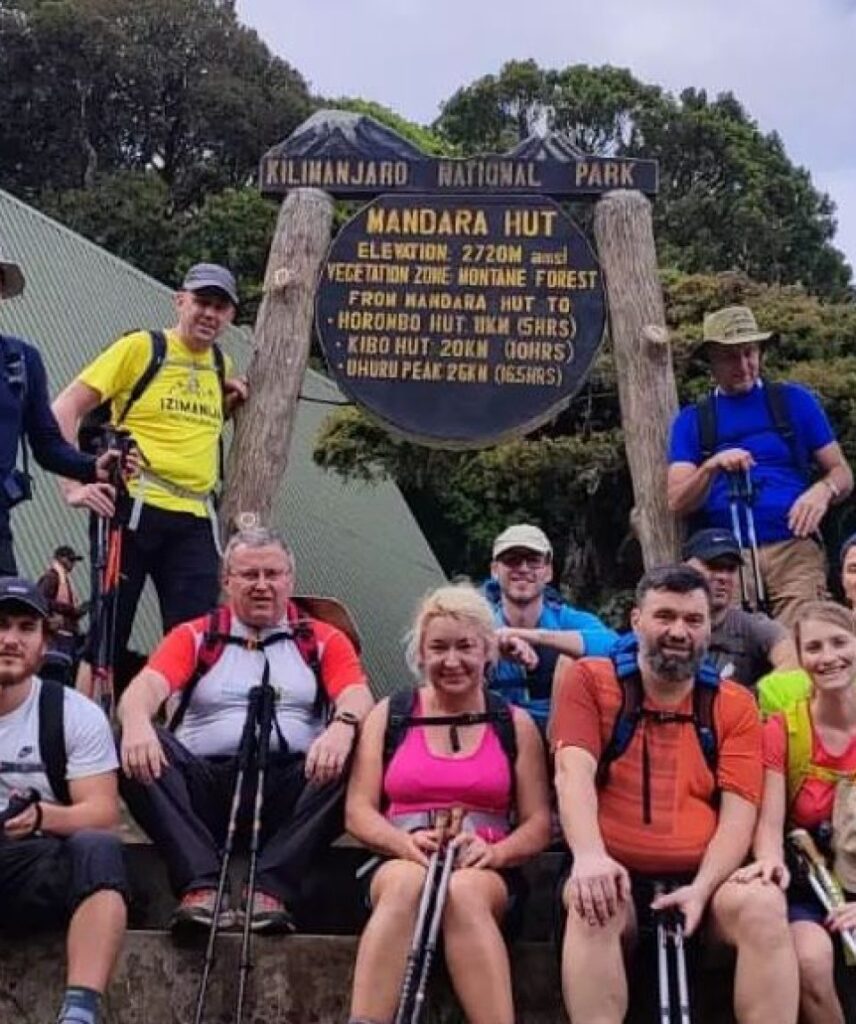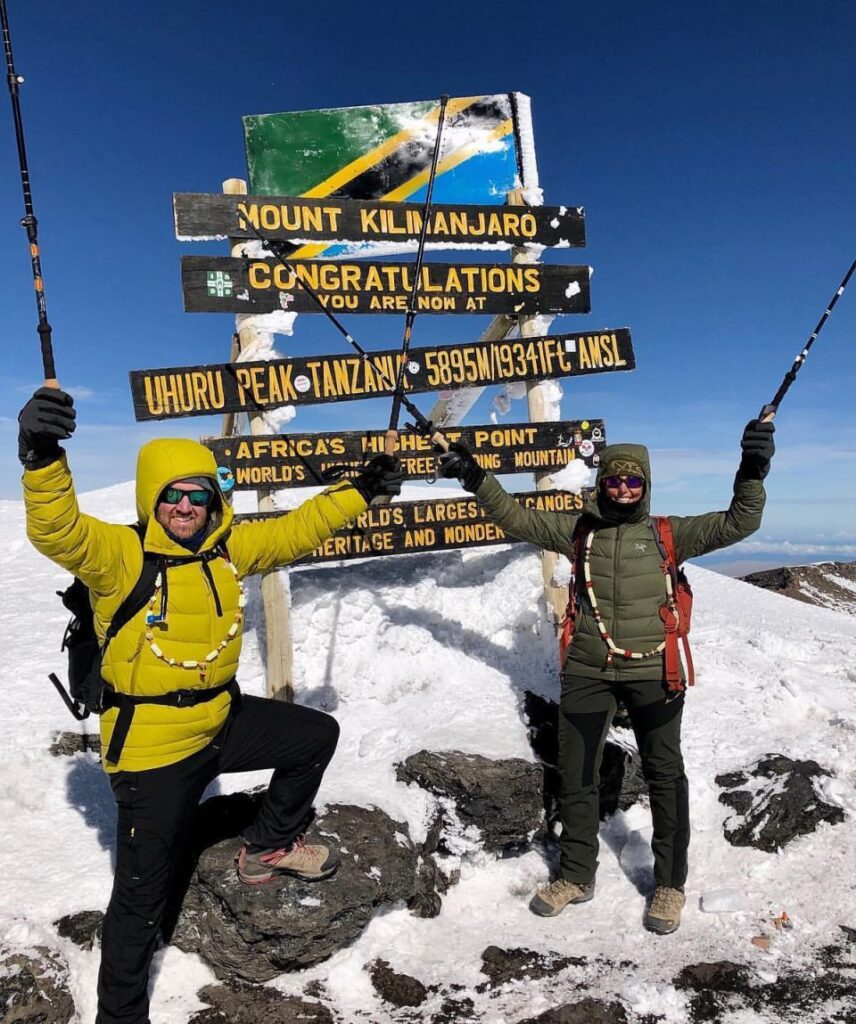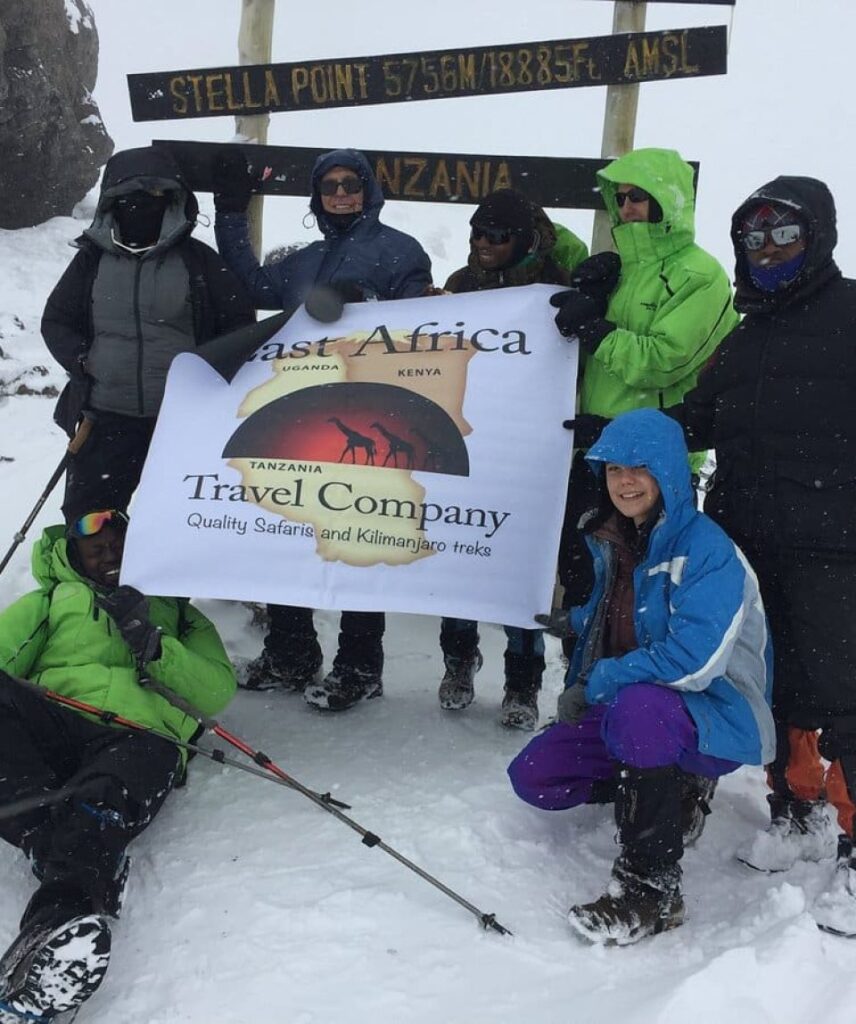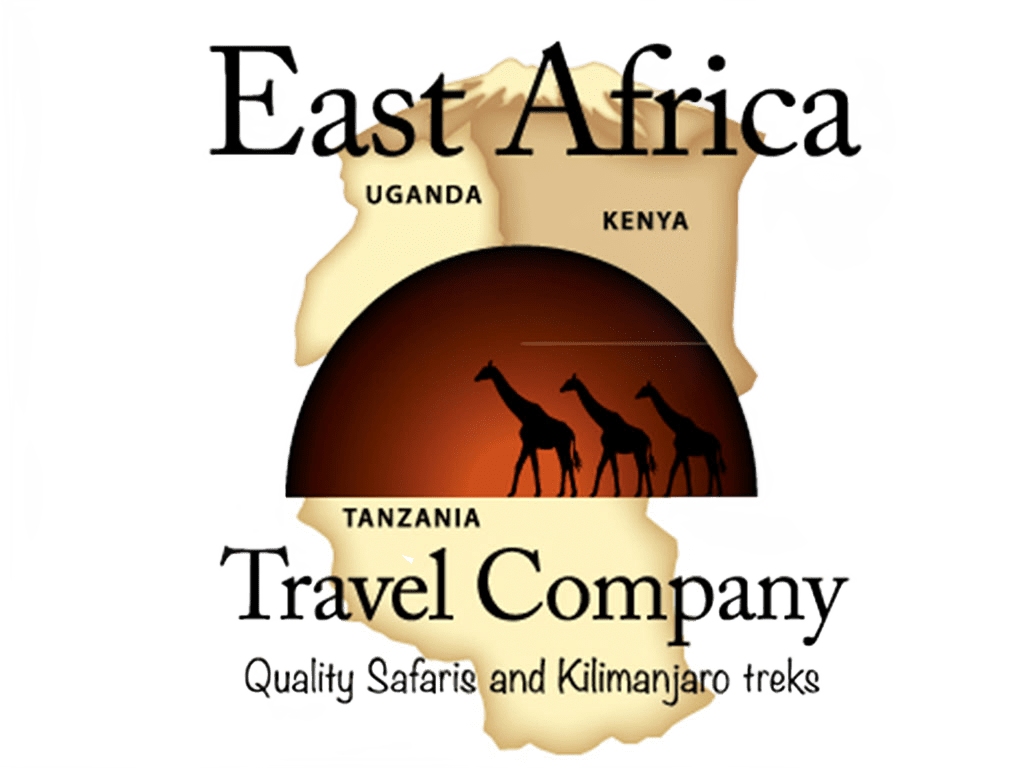Peaks of Kilimanjaro: Discover the awe-inspiring stories of triumph and resilience on Mount Kilimanjaro. Learn about the majestic peaks, essential travel tips, and the incredible journeys of climbers who conquered Africa’s highest mountain. Dive into this comprehensive guide for an unforgettable adventure.



Peaks of Kilimanjaro: 5 Inspiring Stories of Triumph and Resilience
Introduction
Mount Kilimanjaro, towering at 5,895 meters (19,341 feet), is not just the highest peak in Africa but also one of the most iconic mountains in the world. Known for its snow-capped summit amidst the equatorial climate, Kilimanjaro attracts thousands of climbers each year, allured by its majestic beauty and the challenge it presents. Each of its three main peaks—Kibo, Mawenzi, and Shira—offers unique climbing experiences that test the limits of human endurance and resilience.
Geographical Information
Mount Kilimanjaro is located in northeastern Tanzania, near the border with Kenya. The mountain is composed of three volcanic cones: Kibo, the highest peak; Mawenzi, the second highest; and Shira, the third peak. Kilimanjaro’s climate varies with altitude, from tropical at the base to arctic at the summit. The best times to climb are during the dry seasons from late June to October and from late December to February.
There are several routes to the summit, each offering different scenery and levels of difficulty. The Marangu route is the most popular and well-trodden, known for its hut accommodations. The Machame route, often referred to as the “Whiskey Route,” is more challenging but rewards climbers with breathtaking views. The Lemosho and Rongai routes provide more remote and less crowded experiences.
The Peaks of Kilimanjaro
Kibo
Historical Background: Kibo is the central and highest cone of Kilimanjaro. It is a dormant volcano, with its last major eruption occurring approximately 360,000 years ago. The peak is home to the famous Uhuru Point, the highest summit on Kilimanjaro.
Geological Significance: Kibo’s summit crater is nearly 2.5 kilometers wide, and the cone itself features several smaller cones created by past volcanic activity. The peak is covered by a glacier, although it has been rapidly retreating due to climate change.
Challenges of the Climb: Climbers face several challenges, including extreme cold, high winds, and the risk of altitude sickness. The final ascent, typically undertaken at night to reach the summit at sunrise, is particularly grueling due to the steep incline and thin air.
Mawenzi
Geological Features: Mawenzi is an older and eroded peak compared to Kibo. It is rugged and jagged, with deep gorges and towering spires. The highest point on Mawenzi is Hans Meyer Peak, named after one of the first recorded climbers of Kilimanjaro.
Climbing Difficulty: Mawenzi is considered more technically challenging than Kibo, requiring climbers to have rock climbing skills and equipment. The routes are less frequented, adding to the difficulty and sense of isolation.
Unique Characteristics: Mawenzi’s dramatic landscape and challenging climbs attract experienced mountaineers. Its rugged terrain offers a stark contrast to Kibo’s smoother slopes, providing a different kind of adventure.
Shira
Formation and History: Shira is the oldest of Kilimanjaro’s volcanic cones. It is a broad plateau that was once a volcanic crater. Over time, it has eroded into a gentle, rolling landscape.
Accessibility and Routes: The Shira Plateau is accessible via the Lemosho and Shira routes. These routes traverse scenic landscapes, including forests, moorlands, and the plateau itself, offering a gradual ascent to the higher elevations.
Scenic Views: The Shira Plateau provides stunning panoramic views of the mountain and the surrounding landscapes. It is a favorite spot for acclimatization hikes and offers a serene experience compared to the busier routes to the summit.
Inspiring Stories of Triumph and Resilience
Story 1: The Solo Climber
Background of the Climber: Emma, a 35-year-old teacher from the UK, embarked on a solo journey to climb Kilimanjaro after a personal tragedy. Seeking solace and a new challenge, she decided to face the mountain alone.
Challenges Faced: Emma encountered numerous obstacles, including severe altitude sickness, loneliness, and the physical demands of the climb. Despite these challenges, her determination and resilience saw her through.
Key Moments of the Journey: A pivotal moment came when Emma was forced to make a difficult decision to either push through her altitude sickness or turn back. Choosing to continue, she reached the summit and experienced a profound sense of accomplishment.
Impact of the Climb on Personal Life: The climb helped Emma heal from her personal loss and gave her a renewed sense of purpose. She became an advocate for mental health, sharing her story to inspire others facing similar challenges.
Story 2: The Veteran’s Journey
Introduction to the Veteran: John, a retired military veteran, took on Kilimanjaro as a way to cope with his post-traumatic stress disorder (PTSD). The mountain represented a new battle, one that required both physical and mental fortitude.
Physical and Mental Preparation: John underwent rigorous training, focusing on building his stamina and mental resilience. He worked with a therapist to address his PTSD, ensuring he was mentally prepared for the climb.
Overcoming Physical Limitations: Despite chronic knee pain and the physical toll of the climb, John persevered. He drew on his military training to push through the pain and keep moving forward.
Achievement and Aftermath: Reaching the summit was a transformative experience for John. It marked a significant step in his recovery journey and inspired him to continue challenging himself. He now leads veteran support groups, encouraging others to find their own mountains to climb.
Story 3: The Youngest Conqueror
Profile of the Young Climber: At just 12 years old, Maria became the youngest person to summit Kilimanjaro. Her determination and spirit captivated people around the world.
Training Regimen: Maria’s preparation included physical training, studying the routes, and acclimatization hikes. Her parents, both experienced climbers, guided her through the process.
Highlights of the Climb: Maria faced many challenges, including extreme weather and altitude sickness. However, her enthusiasm and positive attitude kept her going. She documented her journey through a video diary, inspiring other young adventurers.
Media Coverage and Recognition: Maria’s climb received widespread media attention. She was celebrated for her achievement and became a role model for young people worldwide, proving that age is no barrier to great accomplishments.
Story 4: The Inspirational Duo
Introduction to the Duo: Sarah and Megan, best friends since childhood, decided to climb Kilimanjaro together to celebrate their 40th birthdays. Their journey was a testament to friendship and mutual support.
Shared Motivation: Both women had faced significant life challenges and saw the climb as a way to reclaim their strength and independence. They trained together, motivating each other every step of the way.
Synergy and Teamwork: Their teamwork was crucial during the climb. They supported each other through moments of doubt and fatigue, their bond strengthening with each passing day.
Completion and Reflection: Reaching the summit together was a deeply emotional experience for Sarah and Megan. It reinforced their belief in the power of friendship and inspired them to take on new adventures together.
Story 5: The Local Guide’s Tale
Background of the Guide: Joseph, a seasoned Kilimanjaro guide, has led countless climbers to the summit. His intimate knowledge of the mountain and his dedication to his clients have made him a beloved figure among climbers.
Experiences with Different Climbers: Joseph has seen it all—from first-time adventurers to seasoned mountaineers. His ability to adapt to different personalities and needs has earned him a reputation for excellence.
Memorable Climbs and Challenges: One of Joseph’s most memorable climbs involved guiding a group of disabled climbers. The experience was both challenging and rewarding, showcasing the resilience and determination of the human spirit.
Personal Achievements: Beyond guiding others, Joseph has personal milestones, including summiting Kilimanjaro over 200 times. His passion for the mountain and his dedication to his profession continue to inspire those who climb with him.
Health and Safety Precautions
Climbing Kilimanjaro requires careful preparation to ensure safety and health.
Altitude Sickness: One of the biggest risks is altitude sickness, which can be life-threatening. It’s essential to acclimatize properly, stay hydrated, and ascend slowly.
Necessary Vaccinations: Travelers should ensure they are up-to-date on vaccinations, including those for yellow fever, hepatitis A and B, typhoid, and tetanus.
Essential Gear and Equipment: Proper gear is crucial. This includes warm clothing, a good-quality sleeping bag, sturdy hiking boots, and a reliable backpack. Trekking poles, hydration systems, and sun protection are also necessary.
Physical Fitness Requirements: Climbing Kilimanjaro is physically demanding. Prospective climbers should engage in regular cardiovascular and strength training exercises. Hiking with a loaded backpack and simulating the climb’s conditions can be beneficial.
Travel Tips for Kilimanjaro
Best Times to Climb: The optimal climbing seasons are during the dry months of late June to October and late December to February. These periods offer better weather conditions and clearer skies.
Choosing the Right Route: Selecting the right route is vital. The Marangu route is popular for its hut accommodations, while the Machame route offers more scenic views. The Lemosho and Rongai routes provide less crowded experiences.
Hiring a Guide or Tour Company: It’s highly recommended to hire a local guide or join a reputable tour company. They provide essential support, local knowledge, and logistical arrangements.
Packing Essentials: Essential items include layered clothing, waterproof gear, a first aid kit, energy snacks, and a camera. Packing light but ensuring all necessities are covered is key.
Budget Planning
Cost Breakdown: Climbing Kilimanjaro can be expensive. Costs include park fees, guide and porter fees, equipment rental, and travel expenses. On average, climbers can expect to spend between $1,500 and $3,000.
Budget-Friendly Tips: To save money, consider booking directly with local companies, traveling during the shoulder seasons, and sharing costs with a group. Buying second-hand gear can also reduce expenses.
Saving Strategies: Start saving well in advance and look for deals on flights and equipment. Setting up a dedicated savings account and allocating a portion of your income each month can help manage costs.
Cultural Insights
Interaction with Local Communities: Engaging with local communities enriches the climbing experience. Learning a few basic Swahili phrases and respecting local customs can foster positive interactions.
Tanzanian Traditions and Customs: Tanzanian culture is rich and diverse. Understanding local traditions, such as greetings and hospitality practices, enhances the travel experience.
Language and Communication Tips: While English is widely spoken, especially by guides, learning some Swahili can be beneficial. Simple phrases like “Jambo” (hello) and “Asante” (thank you) are appreciated.
Expert Insights
Interviews with Seasoned Climbers: Seasoned climbers offer valuable insights. Many recommend focusing on acclimatization, staying hydrated, and maintaining a positive mindset.
Advice from Mountaineering Experts: Experts emphasize the importance of physical preparation, proper gear, and mental resilience. They also advise climbers to be mindful of the environment and practice Leave No Trace principles.
Tips from Local Guides: Local guides suggest pacing oneself, listening to the body, and respecting the mountain’s challenges. Their firsthand experience and knowledge are invaluable for a successful climb.
Conclusion
Climbing Kilimanjaro is more than just a physical challenge; it’s a journey of self-discovery and resilience. The inspiring stories of those who have conquered its peaks remind us of the strength and determination that lies within us all. Whether you’re an experienced mountaineer or a novice adventurer, Kilimanjaro offers an unforgettable experience that leaves a lasting impact. Embrace the challenge, prepare diligently, and take the first step toward your own story of triumph and resilience.
Video
